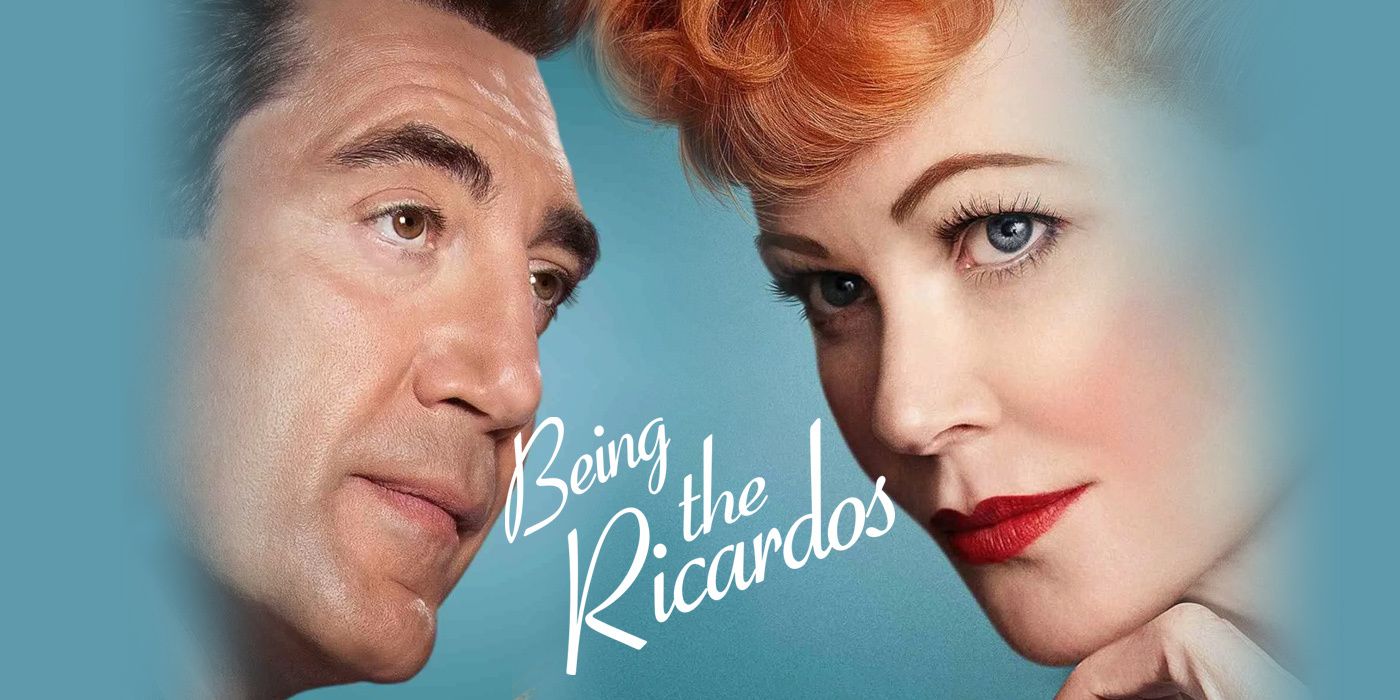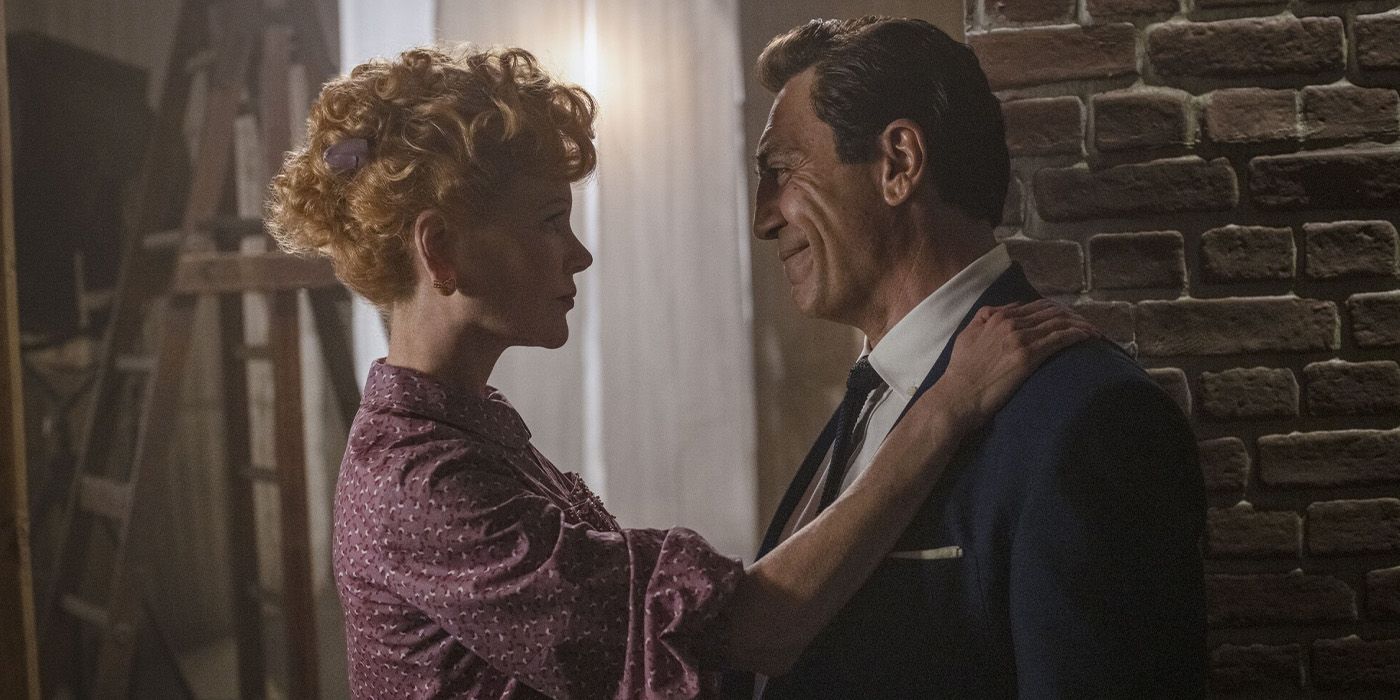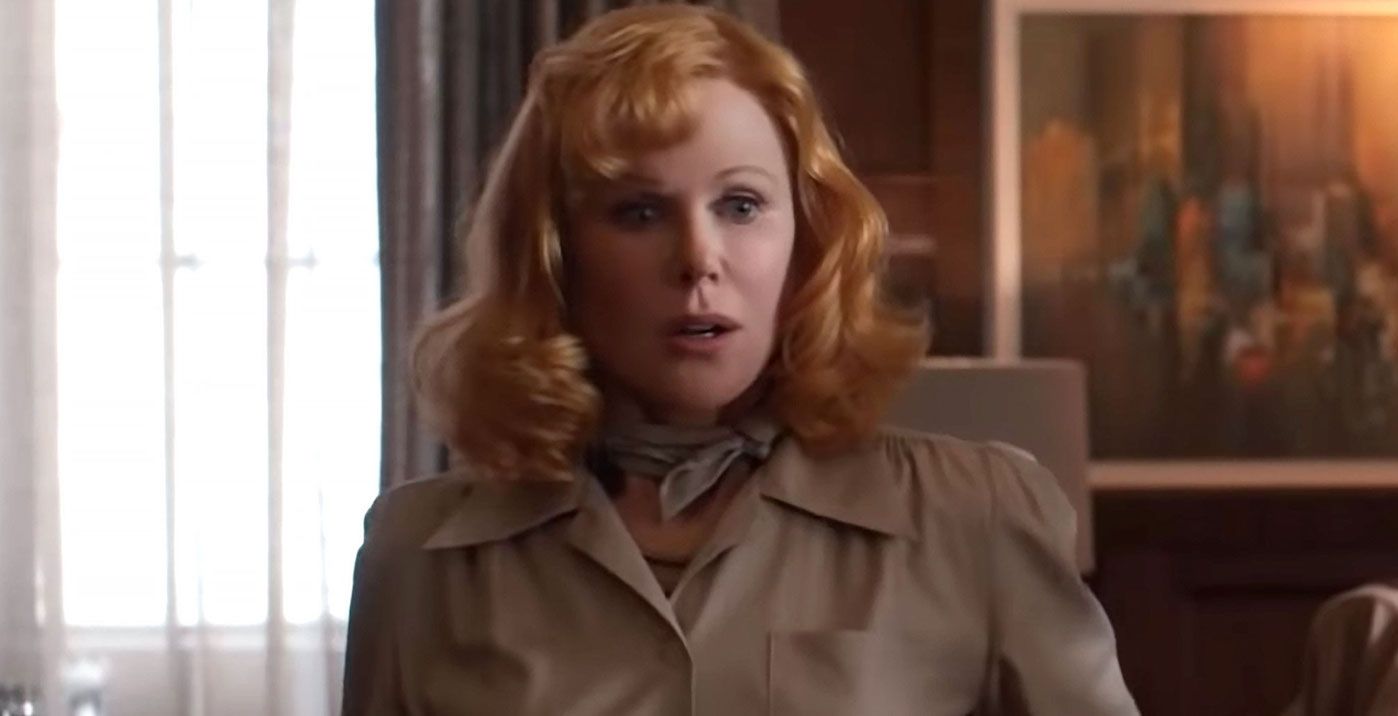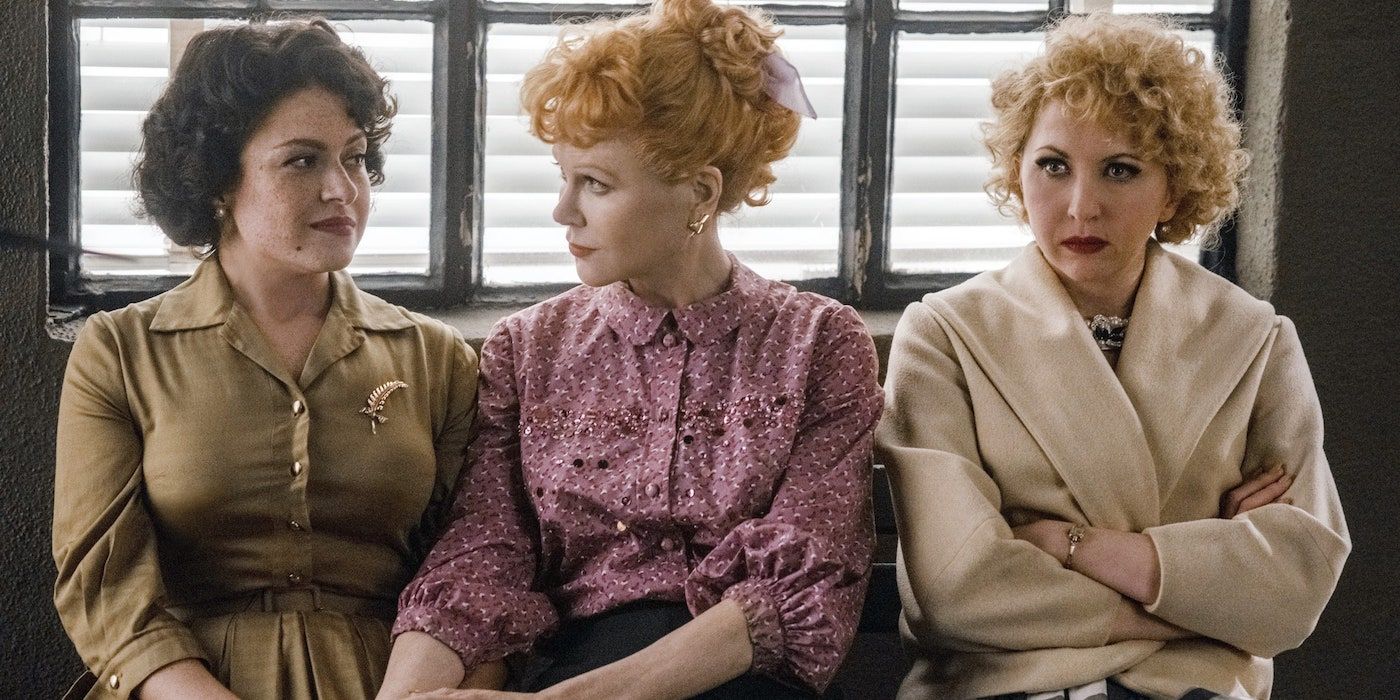The long-awaited biopic, Being the Ricardos, stars Nicole Kidman as Lucille Ball opposite Javier Bardem as Desi Arnaz, and takes a deep dive into the often-mercurial forces behind the Hollywood power couple. Written and directed by Aaron Sorkin, a filmmaker who’s known for writing such intense biopics as The Social Network, Steve Jobs, and Molly’s Game, Sorkin reveals a powder keg of a marriage, a hit TV show beholden to its advertisers, and the backlash from the Red Scare that tormented Hollywood in the 1950s. So how much of the new movie is true and how much is invented for entertainment? We have some ‘splaining' to do.
One intense production week
In Being the Ricardos, the story takes place during just one week of shooting I Love Lucy, starting with the table read of the script on Monday and ending with shooting the episode in front of a live studio audience on Friday evening. Yet, so much happens in between! Lucille Ball discovers she’s pregnant, gets accused of being a Communist, and Desi appears on the cover of a tabloid magazine flirting with another woman. But did all these big events actually happen in the course of one week?
While all three of those events happened in real life, they didn’t take place all in the same week. Sorkin openly admits to taking some liberties with the chronology of the events, to compress the story into a two-hour movie. But more than that, Sorkin wanted to create high stakes for his characters and put them under as much pressure as possible to tell the most thrilling story he could possibly tell.
The actual timeline
The three main events in the film actually took place over a period of three years, from 1952 to 1955. Desi Jr., Ball and Arnaz’s second child, was born in January 1953, so she likely found out she was “spectin” in the summer of ’52. Ball appeared twice before Sen. Joseph McCarthy’s House Un-American Activities Committee, first in April 1952 and again in September 1953. The tabloid magazine, Confidential, did an article about Arnaz’s suspected cheating in January 1955, but the photo of Arnaz and the woman in question had been taken several years earlier.
Comrade Lucy?
Way back in 1936, inspired by her socialist grandfather, Ball did register to vote as a Communist. However, she never actually voted for a Communist candidate. She testified to the HUAC that she had no Communist leanings which seemed to satisfy the committee but J. Edgar Hoover, the director of the FBI, continued to closely follow her career and keep a file on her and her husband.
Desi’s plea to the studio audience
Arnaz knew that if the public thought Ball was a Communist, I Love Lucy’s sponsors would pull out and he and his wife’s career would be over. In the film, he addresses the audience prior to the taping of the show - which he actually did in real life. He made it clear that they both hated Communism and also called Ball his favorite redhead, saying, “In fact, that’s the only thing red about her, and even that’s not legitimate.” The real-life audience cheered for Ball when Arnaz brought her out and they knew the show would continue.
Lucy is ‘Enceinte”
It’s hard to believe today that a pregnant woman appearing on television was once seen as too vulgar since it implied that the married couple actually had S-E-X, but that’s how it was in 1950s America. The network wanted to hide Ball’s pregnancy by having her hide behind furniture, carry large baskets, etc. But Arnaz and Ball knew this would be difficult since Ball’s belly had become very large during her previous pregnancy with her daughter, Lucie. The network finally agreed to show Lucy “spectin”, as Ricky would say, because they weren’t allowed to use the word “pregnant.” In the title of the episode, they used the French term for being pregnant, calling it “Lucy is Enceinte.”
To further calm CBS and the advertisers, Arnaz hired a minister, a priest, and a rabbi to monitor the episodes where Ball appeared pregnant to ensure nothing too risqué was being implied.
A marriage in trouble
William Asher, director for I Love Lucy, saw the marriage as a sinking ship from the beginning. Asher told People magazine, “Before the show began [Ball and Arnaz] had already been separated. An actress and a bandleader. He was on the road; she was a working professional. That’s the kind of marriage that has failure written all over it. You’re separated a while, and before you know it, those giblets begin to jump.”
While Ball knew that Arnaz had quite the reputation for loving the ladies, she still hoped the marriage would work. Arnaz liked to drink heavily and consort with prostitutes, which he didn’t see as a problem in his marriage. I Love Lucy writer, Bob Weiskopf, told People magazine, “Basically, Desi’s attitude was, ‘What the hell’s the matter? I love her. When I go out with women, they’re usually hookers. Those don’t count.’” It’s no surprise the marriage ended in divorce in 1960 and their creative partnership was forced to end, too.
A match not made in heaven
Being the Ricardos depicts the Mertzes, Vivian Vance (Nina Arianda), and William Frawley (J.K. Simmons), as constantly at odds with each other. In fact, they despised each other in real life but wisely contained their animosity in public. Both actors had been vaudeville stars, but Vance had been considered a great beauty and resented having to appear married to a man 22-years her senior. To add insult to injury, she also hated having to appear as Lucy’s older, frumpy friend especially since she was only two years older than Ball.
A three-camera revolution
Desi Arnaz was a mastermind when it came to solving technical problems. It’s true that I Love Lucy’s biggest advertiser, Phillip Morris, insisted the show be shot in New York so their huge East Coast cigarette market would see the highest quality episodes, instead of the less dynamic, fuzzier kinescope copies that were made by a camera filming a monitor playing the show. Arnaz hired cinematographer Karl Freund to work out the details of the three-camera system, also working with director Marc Daniels, and writer/producer Jess Oppenheimer, to build a set where the audience would sit in seats built above the set and camera – a system still used by sitcoms today.
Being the Ricardos is currently playing in theaters and will stream on Amazon Prime Video starting Dec. 21.




